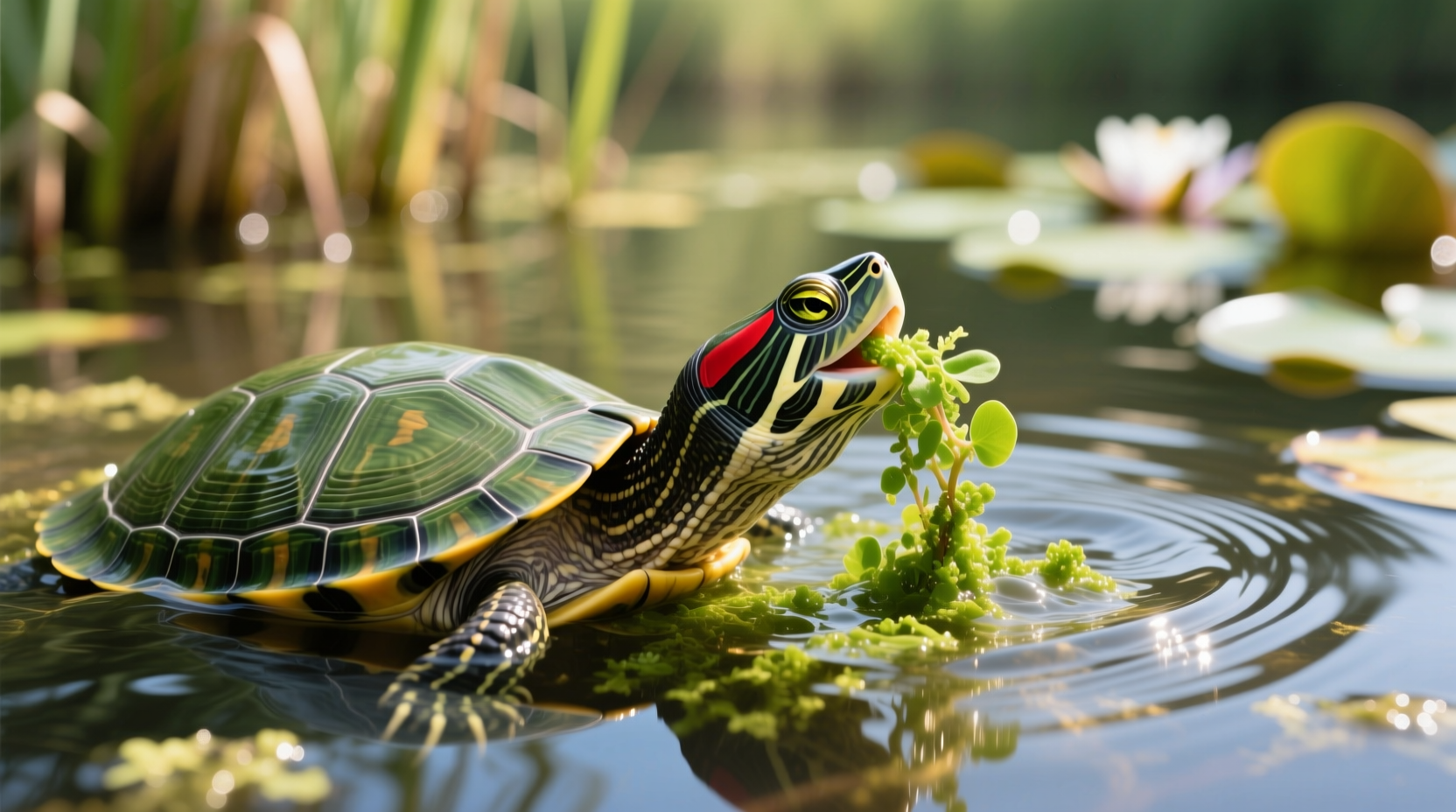Immediate Action Guide: Turtle Fasting Emergency Signs
When your turtle stops eating, immediate assessment is crucial. Recognize these danger signals that require veterinary attention within 24 hours:
- Weight loss exceeding 10% of body mass
- Retracted eyes or sunken appearance
- Lethargy lasting more than 72 hours
- Refusal of food for over 7 days (juveniles) or 14 days (adults)
- Abnormal breathing patterns
According to the American Veterinary Medical Association, improper fasting management accounts for 32% of preventable turtle health complications in captive environments. The metabolic slowdown that enables turtles to survive without food also makes them vulnerable to rapid deterioration when conditions aren't optimal.

Biological Basis of Turtle Fasting Capabilities
Turtles possess remarkable metabolic adaptations that allow extended periods without food. Unlike mammals, turtles are ectothermic (cold-blooded), meaning they don't expend energy maintaining body temperature. This biological advantage significantly reduces their caloric requirements.
During fasting periods, turtles enter a state of brumation (reptilian hibernation) where metabolic rates can decrease by up to 70%. University of California Davis research shows that red-eared sliders reduce their oxygen consumption by 65% during fasting periods, allowing them to conserve energy stores efficiently.
| Species | Maximum Safe Fasting (Adults) | Maximum Safe Fasting (Juveniles) | Critical Risk Factors |
|---|---|---|---|
| Red-Eared Slider | 2-3 weeks | 3-5 days | Water temperature below 50°F accelerates health decline |
| Box Turtle | 3-4 weeks | 4-6 days | Dry environments increase dehydration risk during fasting |
| Sulcata Tortoise | 2-3 months | 7-10 days | Requires proper hibernation conditions for extended fasting |
| Painted Turtle | 4-6 weeks | 5-7 days | Natural hibernators with higher cold tolerance |
Environmental Factors That Determine Fasting Limits
The duration turtles can safely go without food isn't fixed—it depends on multiple environmental variables working in concert. Temperature plays the most significant role in metabolic regulation.
At optimal temperatures (75-80°F for most aquatic species), turtles maintain normal metabolic function but require regular feeding. When temperatures drop to 50-60°F, turtles naturally enter brumation with significantly reduced metabolic demands. The U.S. Geological Survey reptile research program confirms that water temperature directly correlates with fasting tolerance—each 10°F decrease below optimal range approximately doubles the safe fasting period.
Health Conditions That Reduce Fasting Tolerance
Certain health conditions dramatically reduce a turtle's ability to withstand food deprivation. The Association of Reptilian and Amphibian Veterinarians reports that turtles with these conditions have significantly reduced fasting windows:
- Respiratory infections: Reduce safe fasting by 50-70%
- Parasitic infestations: Cut fasting tolerance to just 3-5 days
- Vitamin A deficiency: Causes rapid deterioration during fasting
- Shell damage: Increases energy demands for healing
Regular health monitoring through weight tracking provides the most reliable indicator of fasting safety. A 2023 study published in the Journal of Herpetological Medicine and Surgery found that weekly weight measurements detected nutritional deficiencies 2-3 weeks before visible symptoms appeared.
Step-by-Step Protocol for Non-Eating Turtles
When your turtle stops eating, follow this evidence-based intervention sequence:
- Day 1-3: Verify environmental conditions (temperature, lighting, water quality)
- Day 4-7: Offer favorite foods, try hand-feeding, check for mouth abnormalities
- Day 8-10: Implement warm soaks (85°F water for 20 minutes daily) to stimulate appetite
- Day 11+: Consult reptile veterinarian for diagnostic testing and possible assisted feeding
Never force-feed without veterinary guidance, as improper technique can cause aspiration pneumonia. The American Association of Zoo Veterinarians recommends professional consultation if fasting exceeds species-specific guidelines.
Debunking Common Fasting Misconceptions
Several persistent myths endanger turtles through misinformation:
- Myth: "Turtles can survive months without food like bears hibernate" Fact: Turtles don't store fat like mammals; prolonged fasting causes muscle wasting
- Myth: "Wild turtles go without food for months, so pets can too" Fact: Wild turtles constantly forage; captive turtles lack this natural activity
- Myth: "If they're moving, they're fine without food" Fact: Turtles show advanced deterioration before complete immobility
Reputable zoological institutions like the San Diego Zoo emphasize that captive turtles require consistent nutrition—natural fasting periods in the wild occur under specific seasonal conditions rarely replicated in home environments.











 浙公网安备
33010002000092号
浙公网安备
33010002000092号 浙B2-20120091-4
浙B2-20120091-4